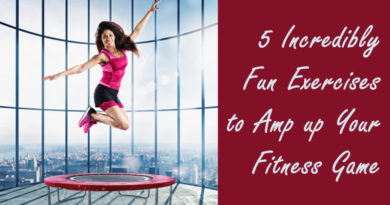Is Running the Best Cardiovascular Exercise?
Cardiovascular exercise is highly beneficial. It’s an important part of any workout regimen, whether you’re interested in losing weight, building muscle, or just becoming healthier and maximizing your lifespan.
Some fitness experts and casual exercisers contend that running is the best cardiovascular exercise, but is this really the case? And what’s the best way to work running into your routine?

What Is Cardiovascular Exercise?
Cardiovascular exercise refers to exercises that are designed to increase your heart rate, stimulate blood flow, and improve your working lung capacity. These exercises tend to be low to moderate intensity, and sustained over a long period of time.
Good cardio exercise can build your muscles, help you build calories, strengthen your cardiovascular system, improve your lung health, and provide a host of other health benefits, especially when repeated on a frequent and consistent basis.
There are many different types of cardiovascular exercise, as we’ll see.
Why Is Running So Beneficial?
Why is running such a beneficial cardio exercise in particular?
- Complex muscle use. For starters, running uses several different muscles in your body, including nearly every muscle group in the lower half of your body and your core. The movement involved in running is dependent entirely on human power, and it’s quite elegant. Your quadriceps, your calves, and even the tiny muscles in your feet and ankles will all get a powerful workout.
- Weight bearing nature. While running, you’ll be bearing your entire weight. This isn’t the case for other forms of cardio exercise; on a bike, you’ll be sitting on a seat and distributing your weight in a different way, and in the water while swimming, your natural buoyancy will offset some of your body weight.
- Calories burned. Generally speaking, an hour of running will burn more calories than an hour of other forms of cardio. There are some variables, including intensity, that can contradict this point. But when all other factors are equal, running is incredibly efficient.
- Accessibility. There’s a lot to learn about running, and many beginners struggle with elementary mistakes, but for the most part, running is highly accessible. If you have a good pair of shoes, a sidewalk, and ample motivation, you can start running right now. You don’t need to invest in hundreds of dollars of equipment, nor do you need to take advanced classes to learn proper form.
Downsides of Running
There are also some downsides of running that you need to understand. Running is not a perfect exercise, despite all its benefits. It’s also not an ideal exercise for each individual.
- Joint stress. The impact and shock of running can be stressful to your joints, especially if you’re not using proper equipment or proper form. If you already have joint problems, or if you’re new to running, this can be an issue. If you’re not using proper equipment, it’s an even bigger potential issue.
- Risk of injury. Any runner runs the risk of injuring themselves. While it’s true that injury is a possibility with any form of exercise, the speed and impact of running make it slightly riskier.
- Initial difficulty. If you’re starting an exercise regimen for the first time, or if you’re very overweight, running can be extremely difficult to get into. It can be challenging, or downright painful for newcomers.
- Lack of upper body support. You’ll get a little bit of upper body action if you’re running with proper form, but compared to other forms of cardiovascular exercise, your arms, back, and shoulders won’t be very engaged.
Other Forms of Cardio to Consider
So what are the other forms of cardio you could consider, if running isn’t for you?
- Swimming. Swimming is a common alternative because it’s much lower impact and it works the entire body. There are also many different strokes to learn, so you’ll always have variety in your routine.
- Biking. For some people, biking is a superior choice. You’ll need to invest in a good bike to get started, but there’s not much of a learning curve. Biking is less stressful on your joints, meaning you’ll probably have more stamina when exercising, and you’ll travel faster, which for many people is enjoyable.
- Rowing. You can also consider rowing, either in an actual vessel or with the help of a cable machine. It’s a great way to work your upper body while still getting cardio time.
It’s true that running is one of the best forms of cardiovascular exercise, and it’s a good fit for most people and most routines. However, it’s not a perfect exercise, and not everyone will benefit from it equally.
As long as you’re getting some form of cardio, you should be in a position to achieve your health and fitness goals.



